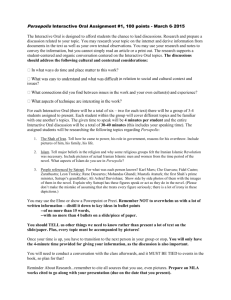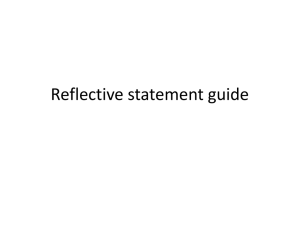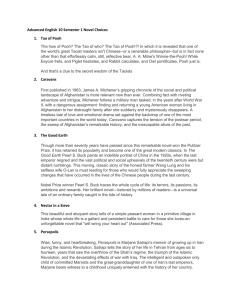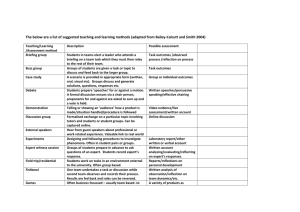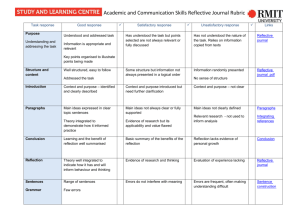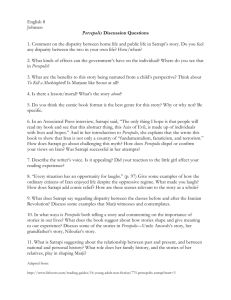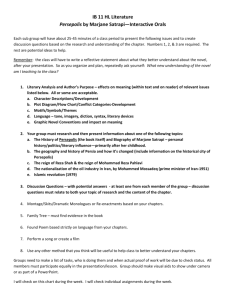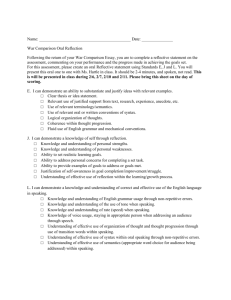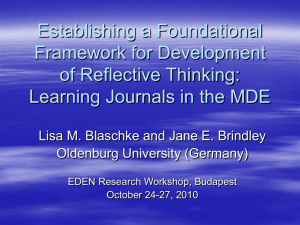Interactive Oral #2
advertisement
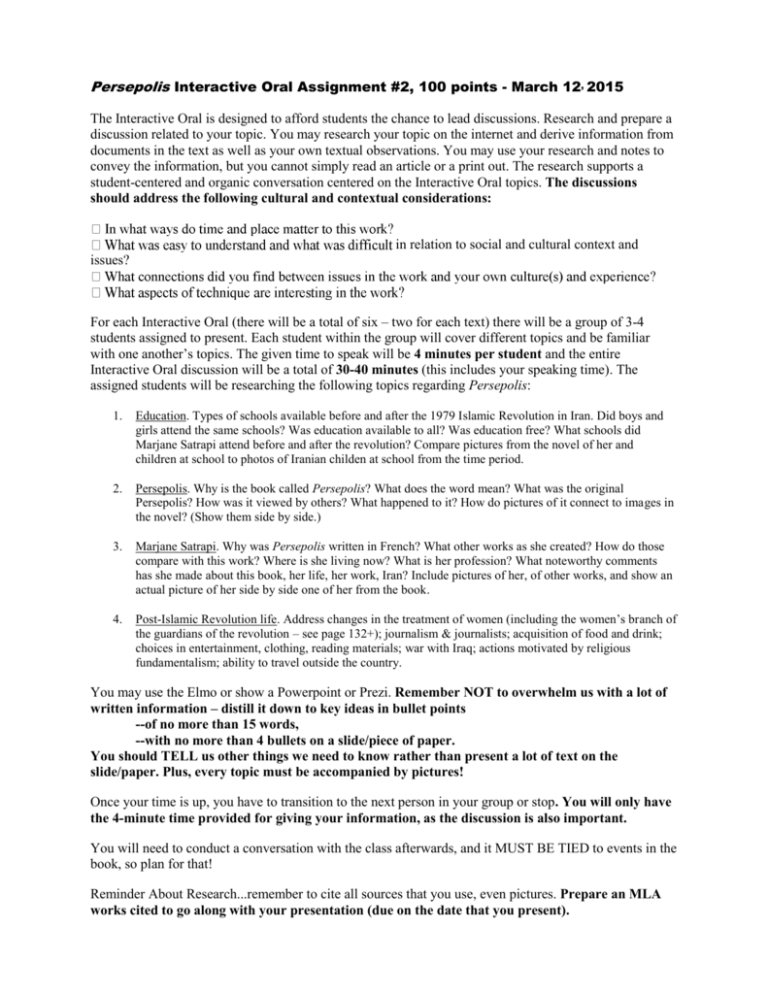
Persepolis Interactive Oral Assignment #2, 100 points - March 12, 2015 The Interactive Oral is designed to afford students the chance to lead discussions. Research and prepare a discussion related to your topic. You may research your topic on the internet and derive information from documents in the text as well as your own textual observations. You may use your research and notes to convey the information, but you cannot simply read an article or a print out. The research supports a student-centered and organic conversation centered on the Interactive Oral topics. The discussions should address the following cultural and contextual considerations: in relation to social and cultural context and issues? For each Interactive Oral (there will be a total of six – two for each text) there will be a group of 3-4 students assigned to present. Each student within the group will cover different topics and be familiar with one another’s topics. The given time to speak will be 4 minutes per student and the entire Interactive Oral discussion will be a total of 30-40 minutes (this includes your speaking time). The assigned students will be researching the following topics regarding Persepolis: 1. Education. Types of schools available before and after the 1979 Islamic Revolution in Iran. Did boys and girls attend the same schools? Was education available to all? Was education free? What schools did Marjane Satrapi attend before and after the revolution? Compare pictures from the novel of her and children at school to photos of Iranian childen at school from the time period. 2. Persepolis. Why is the book called Persepolis? What does the word mean? What was the original Persepolis? How was it viewed by others? What happened to it? How do pictures of it connect to images in the novel? (Show them side by side.) 3. Marjane Satrapi. Why was Persepolis written in French? What other works as she created? How do those compare with this work? Where is she living now? What is her profession? What noteworthy comments has she made about this book, her life, her work, Iran? Include pictures of her, of other works, and show an actual picture of her side by side one of her from the book. 4. Post-Islamic Revolution life. Address changes in the treatment of women (including the women’s branch of the guardians of the revolution – see page 132+); journalism & journalists; acquisition of food and drink; choices in entertainment, clothing, reading materials; war with Iraq; actions motivated by religious fundamentalism; ability to travel outside the country. You may use the Elmo or show a Powerpoint or Prezi. Remember NOT to overwhelm us with a lot of written information – distill it down to key ideas in bullet points --of no more than 15 words, --with no more than 4 bullets on a slide/piece of paper. You should TELL us other things we need to know rather than present a lot of text on the slide/paper. Plus, every topic must be accompanied by pictures! Once your time is up, you have to transition to the next person in your group or stop. You will only have the 4-minute time provided for giving your information, as the discussion is also important. You will need to conduct a conversation with the class afterwards, and it MUST BE TIED to events in the book, so plan for that! Reminder About Research...remember to cite all sources that you use, even pictures. Prepare an MLA works cited to go along with your presentation (due on the date that you present). Your Interactive Oral can take one of the following forms (I am open to additional proposed forms) , but your group must decide on one method no later than March 11th, 2nd period (can be e-mailed): Students could introduce the discussion, adopting the teacher’s role for lessons on the work, and lead the class discussion. Students, either individually or working in groups, could choose a clip of a film or other visual medium and lead a discussion on how it may deepen understanding of culture or context. A fishbowl of experts discussing a contextual aspect of a work, then field questions from the class at large. A panel discussion in which students perform in character to explore the plot, setting, and motives of the characters, with the rest of the class brainstorming questions for the panel members. The student can select a related reading that teaches or informs the class's reading of the text studied on some aspect of the work and then lead a class discussion through that related reading. The student could create a multimedia project (YouTube video, prezi, museum box) as a springboard into the expert discussion and then engage the rest of the class in a critique or feedback. Note: Immediately following the IO, we will write your reflective statement. The reflective statement is a short writing exercise and should be completed as soon as possible following the interactive oral. Each student is asked to provide a reflection on each of the interactive orals. The reflective statement on the same work as the student’s final assignment is submitted for assessment. The reflective statement must be based on the following question: How was your understanding of cultural and contextual considerations of the work developed through the interactive oral? Formal requirements Length 300–400 words. If the limit is exceeded, assessment will be based on the first 400 words. Submission The reflective statement about the work used in the student’s final assignment (essay) is submitted together with the assignment. Assessment The reflective statement is awarded a mark out of 3 using assessment criterion A. Criterion A: Knowledge and understanding of the work(s) • To what extent does the student show how his or her understanding of cultural and contextual elements was developed through the interactive oral? Note: The word limit for the reflective statement is 300–400 words. If the word limit is exceeded, 1 mark will be deducted. Marks 0 1 2 3 Level descriptor The work does not reach a standard described by the descriptors below. Reflection on the interactive oral shows superficial development of the student’s understanding of cultural and contextual elements. Reflection on the interactive oral shows some development of the student’s understanding of cultural and contextual elements. Reflection on the interactive oral shows development of the student’s understanding of cultural and contextual elements.
